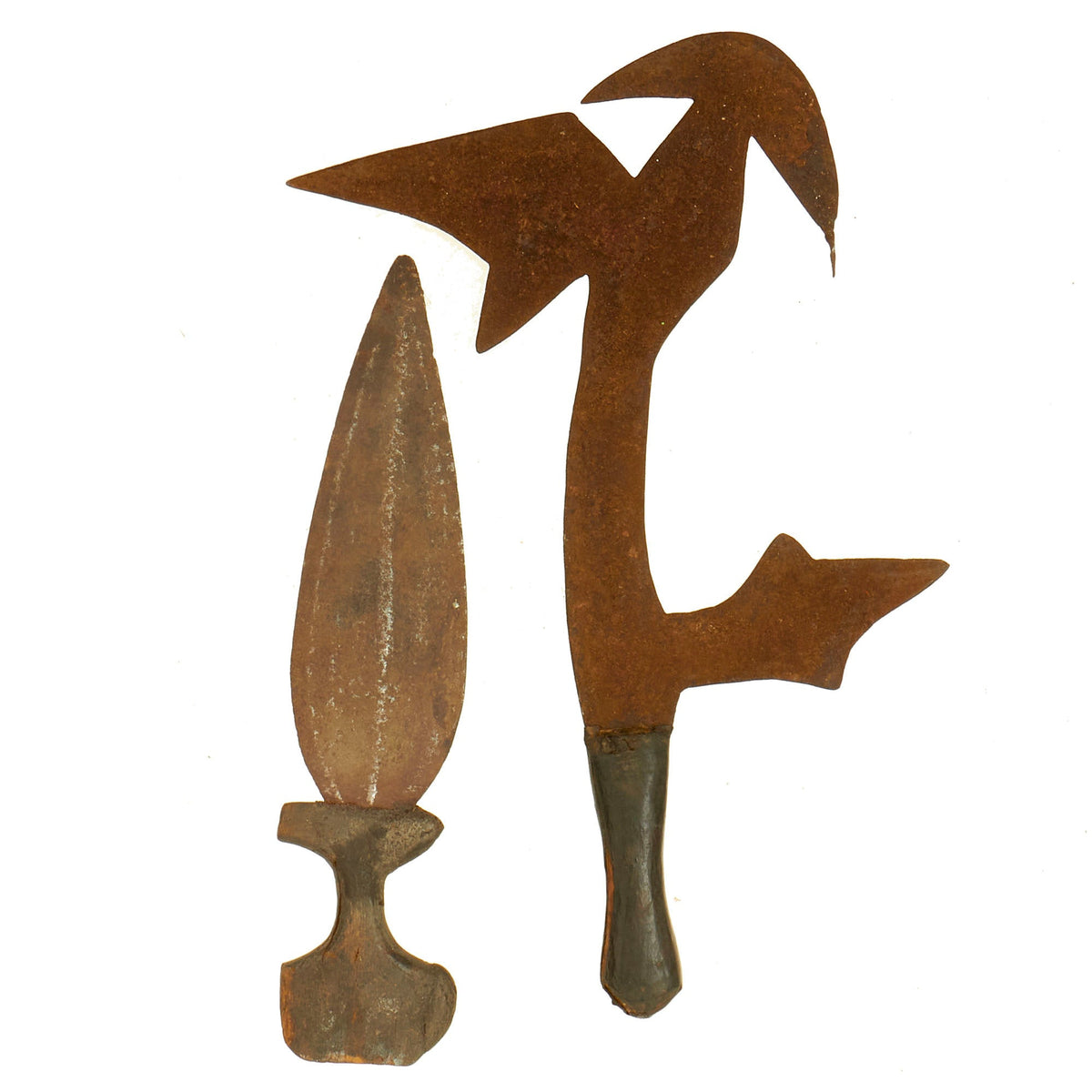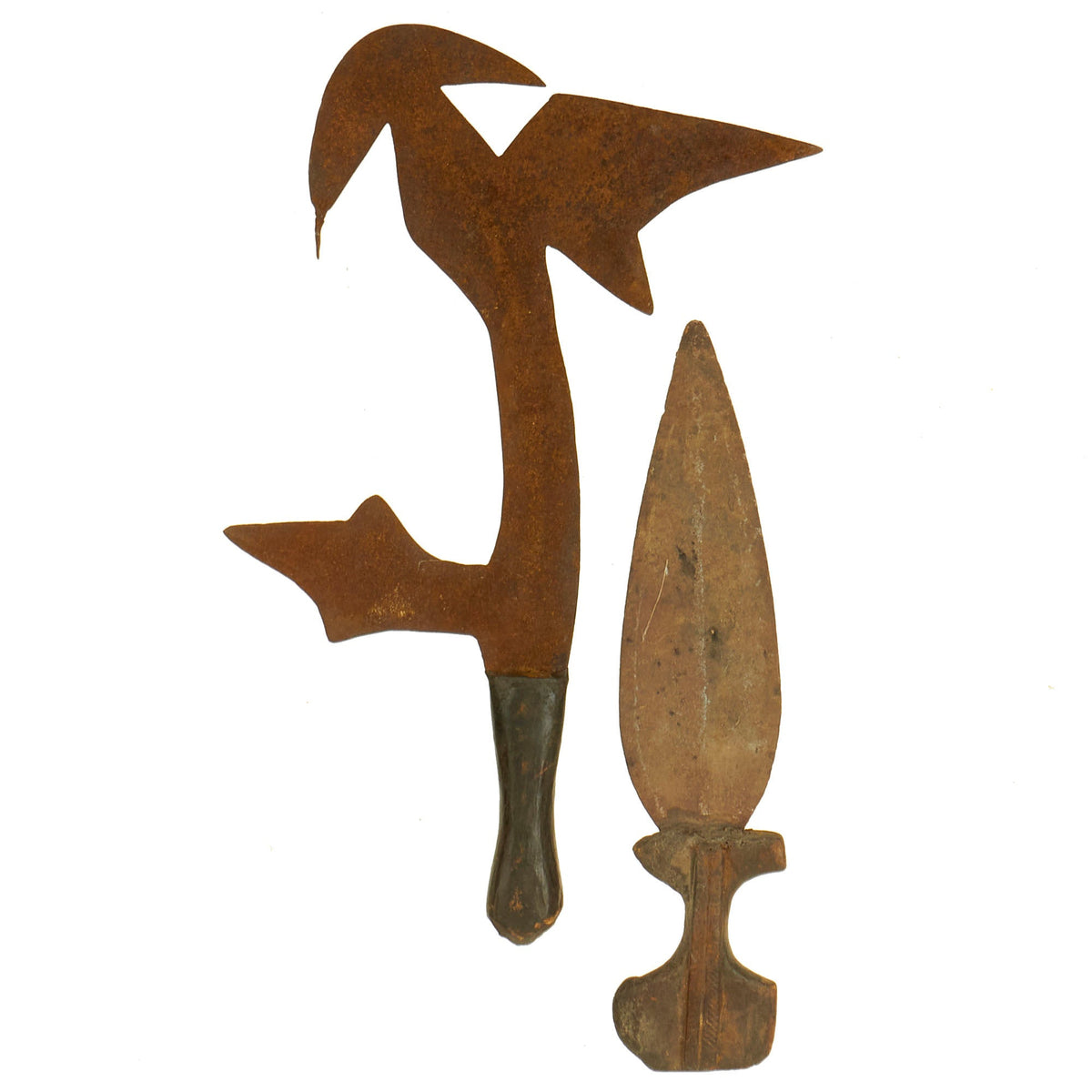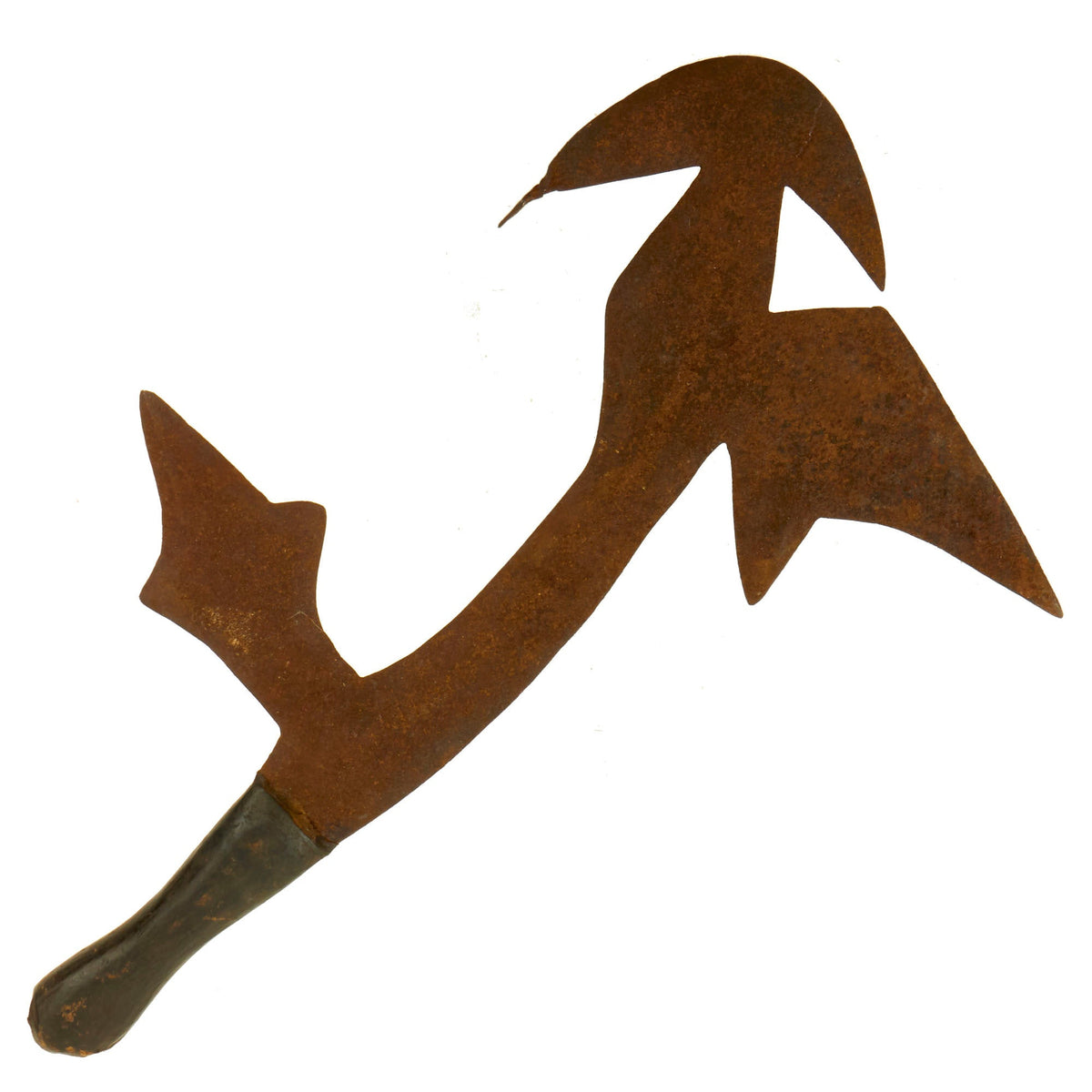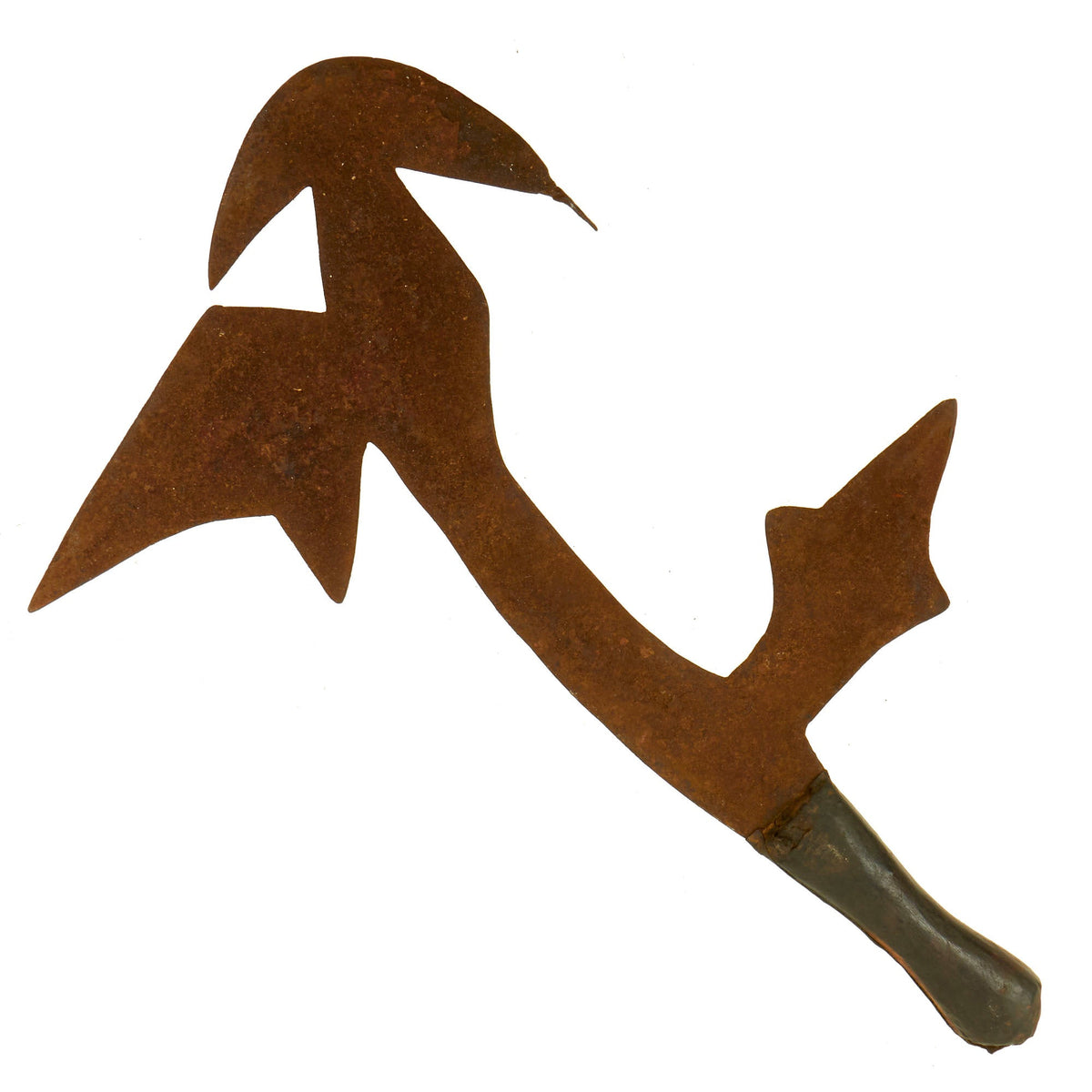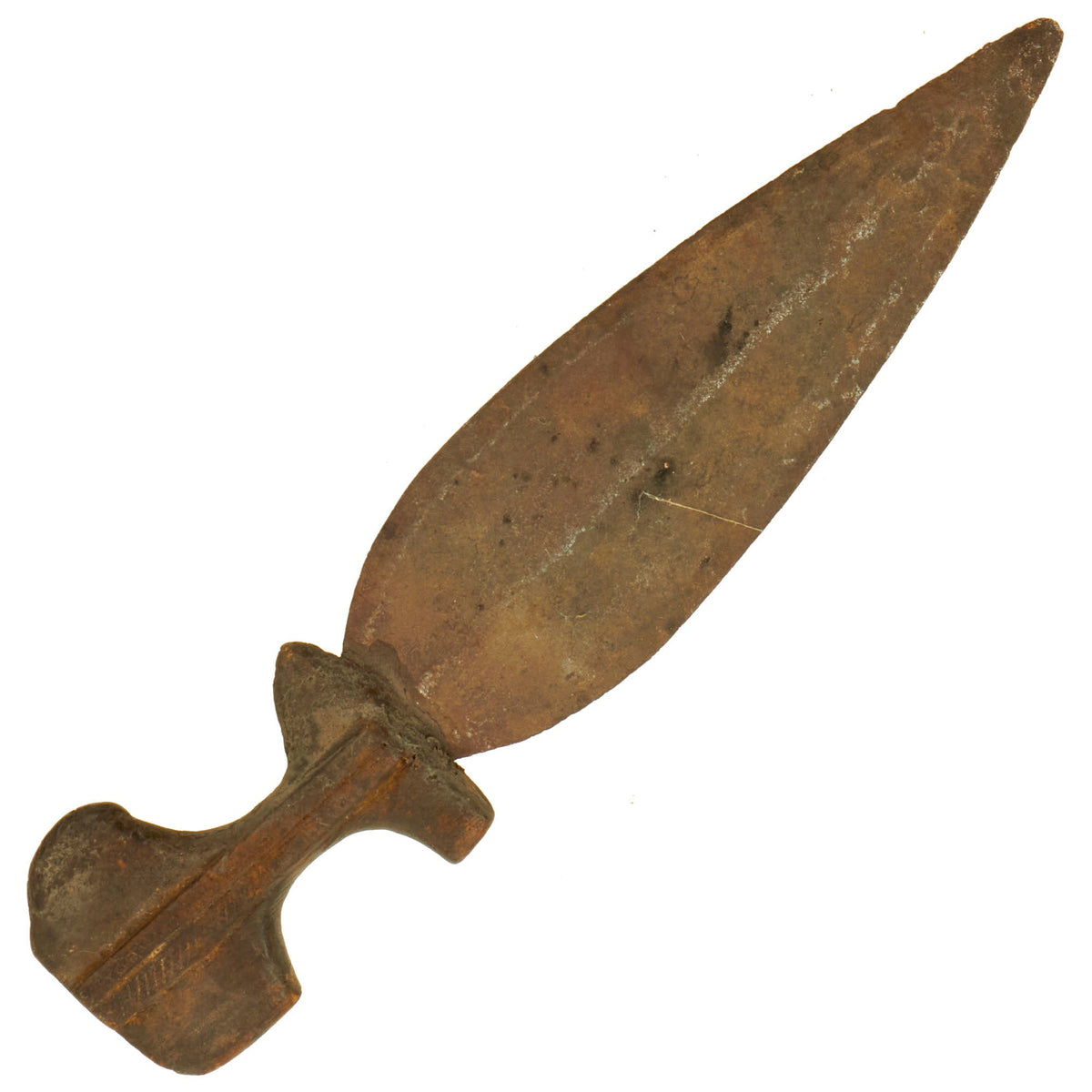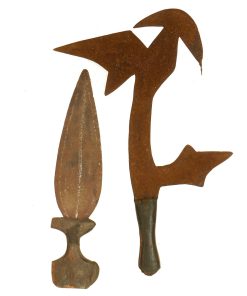Original African 19th Century Set of Knives From Southern Congo Region – Ngbaka Throwing Knife and Tetela Knife Original Items
$ 395,00 $ 118,50
Original Item: One of a Kind Set. IMA President Christian Cranmer recalls times when as a boy, his father used to tell him that when he was young, there really were Atlases that had “UNEXPLORED” and “UNKNOWN” printed right across the center of the Continent of Africa. Needless to say the European Powers, especially the British, were always looking for new areas where they could expand the empire. In the later half of the 19th century, they started many “Campaigns” of conquest and Empire building. They fought against indigenous peoples, who were armed with edged weapons for the most part.
This extraordinary Native fighting sword is a typical example. It is are quite unique to itself, coming from a world that had no contact with Europeans, and most likely little contact at all outside of the local area. In these areas, the power of the sword was everything but alas, no match for the breech loading rifles of the Europeans.
The knives in this set are in a lovely, aged mature condition showing many years of faithful use. They have surface oxidation, pitting and dried handles but are otherwise lovely display items.
The knives in this set:
– Ngbaka Mabo Throwing Knife: Mabo throwing knives, collectively known as ndo, were used as weapons of war, prestige objects, and currency blades. At the turn of the 20th century, nearly all Ngbaka Mabo men carried spears and a throwing knife whenever they left their villages, even in times of peace. Men used the knives more often as handweapons than as throwing weapons in combat, but a knife like this one was far more often a prestige accessory rather than a weapon. In the hands of lineage heads, hunting chiefs, and religious specialists, throwing knives were signs of authority and rank. Measures 18 inches in overall length, with the multi-headed blade measuring 12 1/2″ long by 12″ wide.
– Mangbetu Broad Leaf Blade Dagger: The Mangbetu are a Central Sudanic ethnic group in the Democratic Republic of the Congo, living in the northeastern province of Haut-Uele. The Mangbetu stood out to European colonists because of their elongated heads. Traditionally, babies’ heads were wrapped tightly with cloth in order to give them this distinctive appearance. The practice, called Lipombo, began dying out in the 1950s with the arrival of more Europeans and westernization. Because of this distinctive look, it is easy to recognize Mangbetu figures in African art. Measures 14 3/4″ with a 10″ blade.
The Mangbetu originally came from south Sudan and migrated south to their current location in AD1000. When they arrived into their current location with its new climate and environment (which was different from the much drier lands in south Sudan) they came to be so heavily indebted to Bantu teachers that they borrowed almost their whole vocabulary relating to their new habitat from Bantu languages.
By the early 18th century the Mangbetu had consisted of a number of small clans who, from southward migrations, had come in contact with a number of northward-migrating Bantu-speaking tribes among whom they lived interspersed. In the late 18th century a group of Mangbetu-speaking elites, mainly from the Mabiti clan, assumed control over other Mangbetu clans and many neighboring Bantu-speaking tribes. It is likely that their knowledge of iron and copper forging, by which they made weapons and fine ornaments, gave them a military and economic advantage over their neighbors.
Both come more than ready for further research and display.
Fast Shipping with Professional Packaging
Thanks to our longstanding association with UPS FedEx DHL, and other major international carriers, we are able to provide a range of shipping options. Our warehouse staff is expertly trained and will wrap your products according to our exact and precise specifications. Prior to shipping, your goods will be thoroughly examined and securely secured. We ship to thousands clients each day across multiple countries. This shows how we're dedicated to be the largest retailer on the internet. Warehouses and distribution centres can be located throughout Europe as well as the USA.
Note: Orders with more than one item will be assigned a processing date depending on the item.
Before shipping before shipping, we'll conduct a thorough inspection of the items you have ordered. Today, the majority of orders will be delivered within 48 hours. The delivery time will be between 3-7 days.
Returns
The stock is dynamic and we cannot completely manage it because multiple stakeholders are involved, including our factory and warehouse. So the actual stock may alter at any time. It's possible that you may not receive your order once the order has been made.
Our policy is valid for a period of 30 days. If you don't receive the product within 30 days, we are not able to issue a refund or an exchange.
You can only return an item if it is unused and in the same state as the day you received it. You must have the item in its original packaging.
Related products
Uncategorized
Uncategorized
Uncategorized
Uncategorized
Uncategorized
Armored Burgonet Helmet & Polearm from Scottish Castle Leith Hall Circa 1700 Original Items
Uncategorized
Uncategorized
Uncategorized
Uncategorized
Uncategorized
Uncategorized
Uncategorized
Australian WWII Owen MK1 Machine Carbine SMG Custom Fabricated Replica with Sling Original Items
Uncategorized
Uncategorized
Uncategorized
Uncategorized
Angolan Rebel 1970s era 60mm Inert Display Mortar from Angolan Civil War Original Items
Uncategorized
Band of Brothers ORIGINAL GERMAN WWII Le. F.H. 18 10.5cm ARTILLERY PIECE Original Items
